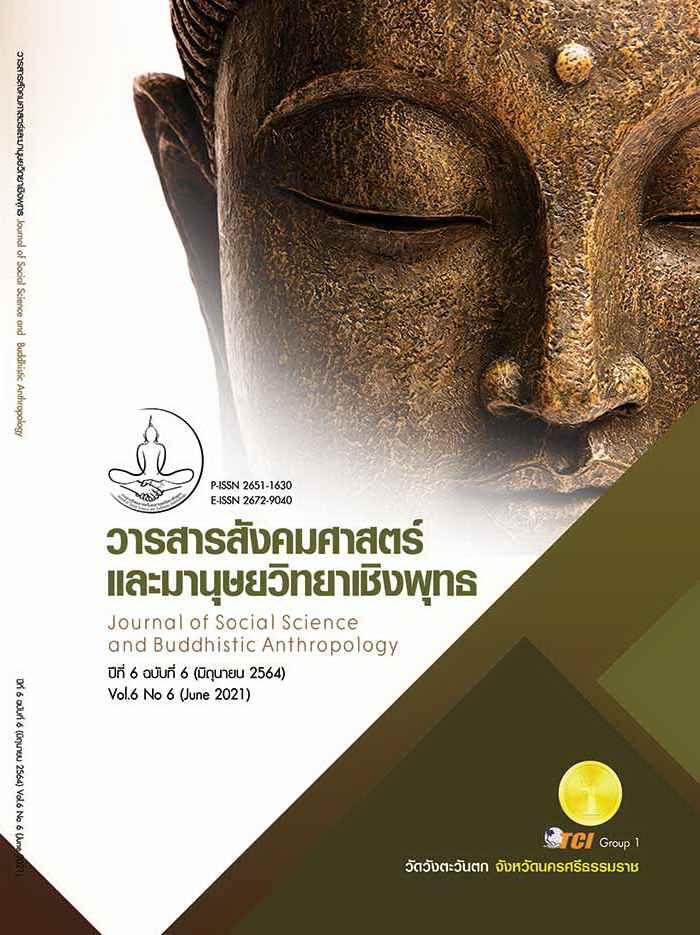THE KING’S PHILOSOPHY IN KING RAMA IX’S BEST NOVELS
Keywords:
The King’s philosophy, Concept, King Rama IX’s best novelAbstract
The objectives of this research article were to examine the concepts which are compatible with the King’s philosophy in King Rama IX’s nine novels recognized the best from the selection committee for His Majesty King Bhumibol Adulyadej’s literary works which present the King’s philosophy. Novels Included Kao Chue Karn, Tung Maharaj, Bang Krapong, Bussabok Baimai, Pooying Konnan Chue Boonrod, Pooyai Lee Kab Nangma, Paendin Nee Yang Ruenrom, Paidaeng, and Look I-saan. This study is a documentary research relying on descriptive - analytical approach. The results show 5 obvious dimensions including 1) self - reliance, 2) sufficiency, 3) endeavor, 4) knowledgeability and understandability about work, geography and social context, and 5) altruism. All the five dimensions of the King’s philosophy can be found inclusively in the 9 works, and all five dimensions are interrelated. This interrelation implies that the King’s philosophy is the fundamental principle that can be applied into everyone’s life. It fosters happiness, facilitates success in household and occupational lives, and allows everyone to live in society peacefully and help each other by focusing on the common interest benefits. Based on altruistic practice, our society will be driven forwards stably and sustainably. Although the nine works were composed some decades ago, the philosophical ideas reflected through their stories are still evergreen. Therefore, the King’s philosophy is not just an intangible thought and discourse but it evidentially effective and applicable.
References
กนกกาญจน์ ฉวีวงศ์. (2552). การศึกษาการดำเนินชีวิตโดยใช้หลักการพึ่งตนเองตามแนวปรัชญาเศรษฐกิจพอเพียงของบุคลากรโรงเรียนประถมศึกษา สำนักงานเขตภาษีเจริญ สังกัดกรุงเทพมหานคร. ใน วิทยานิพนธ์การศึกษามหาบัณฑิต สาขาวิชาการบริหารการศึกษา. มหาวิทยาลัยศรีนครินทรวิโรฒ.
กรมศิลปากร กระทรวงวัฒนธรรม. (2562). วรรณกรรมยอดเยี่ยมในสมัยรัชกาลที่ 9 ตามแนวคิดศาสตร์พระราชา. กรุงเทพมหานคร: สำนักวรรณกรรมและประวัติศาสตร์ กรมศิลปากร.
กฤษณา อโศกสิน. (2555). บุษบกใบไม้. กรุงเทพมหานคร: แสงดาว.
กันยารัตน์ รินศรี. (2562). ศาสตร์พระราชากับการประกอบอาชีพ ในยุคประเทศไทย 4.0. วารสารธรรมวิชญ์, 2(2), 257- 268.
กาญจนา นาคนันทน์. (2540). ผู้ใหญ่ลีกับนางมา. กรุงเทพมหานคร: บรรณกิจเทรดดิ้ง.
กีรติวรรณ กัลยาณมิตร และคณะ. (2563). การมีส่วนร่วมของชุมชนในการพัฒนาหมู่บ้านเศรษฐกิจพอเพียง: กรณีศึกษาชุมชนตำบลหัวดง อำเภอเมือง จังหวัดพิจิตร. วารสารรัชต์ภาคย์, 14(34), 69-85.
เดชา ปุญญบาล. (2560). 9 ตามรอยบาท ศาสตร์พระราชา. วารสารสมาคมนักวิจัย, 22(2), 13-20.
โบตั๋น. (2524). ผู้หญิงคนนั้นชื่อบุญรอด. กรุงเทพมหานคร: สุวีริยาสาสน์.
พลวัฒน์ ชุมสุข. (2557). รูปแบบการดำเนินวิถีชีวิตตามหลักเศรษฐกิจพอเพียงของชาวอีสาน. ใน รายงานการวิจัย. มหาจุฬาลงกรณราชวิทยาลัย.
รื่นฤทัย สัจจพันธุ์. (2558). วรรณกรรมปัจจุบัน. กรุงเทพมหานคร: สำนักพิมพ์มหาวิทยาลัยรามคำแหง.
เรียมเอง. (2539). ทุ่งมหาราช. กรุงเทพมหานคร: บรรณกิจเทรดดิ้ง.
วินทร์ เลียววาริณ. (2550). บางกะโพ้ง. กรุงเทพมหานคร: อมรินทร์บุ๊คเซ็นเตอร์.
สถานีพัฒนาที่ดินสุพรรณบุรี. (2561). ศาสตร์พระราชา จากนภา ผ่านภูผา สู่มหานที. เรียกใช้เมื่อ 10 ธันวาคม 2563 จาก http://r01.ldd.go.th/spb/News61/Continuetheworkthat Fatherdid/KMRama9.pdf
อภิชิต ดวงธิสาร และคณะ. (2563). ศาสตร์พระราชากับการสร้างความเข้มแข็งให้กับชุมชน : กรณีศึกษาองค์การบริหารส่วนตำบลสระพัง อาเภอบ้านแท่น จังหวัดชัยภูมิ. วารสารวิชาการมหาวิทยาลัยปทุมธานี, 12(2), 165-180.








